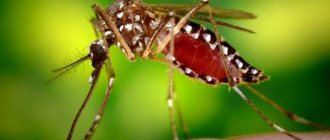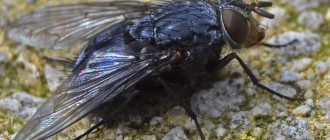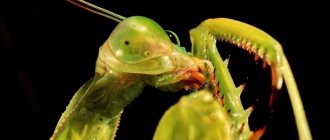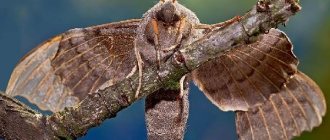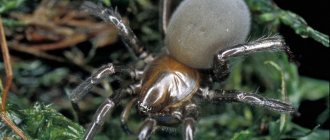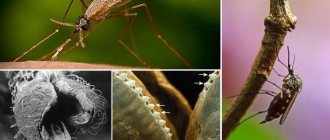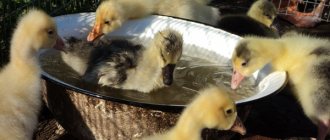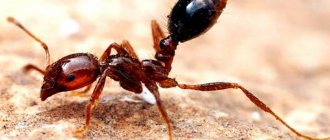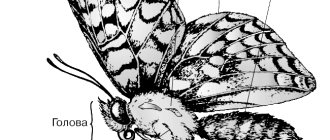Representatives of fauna move at different speeds. The bulk of insects fly thanks to the existing pair of wings. Some of them, such as mosquitoes and flies, have only one - the front pair. Therefore, they are classified as members of the order Diptera. The absence of additional wings allows flies to make more frequent movements with them and maneuver during flight. The fly speed is pretty decent.
Fly vs fly
The video footage shows that at first the killer fly sits motionless.
But as soon as the housefly flies about seven centimeters above her, the hunter makes a lightning-fast throw, and then both end up at the bottom of the chamber. Only after watching slow-motion footage on a computer does it become clear what happened: the killer fly took off, flew around the victim three times, trying to grab it several times before it managed to do it with its front paws, knock it to the floor and bite into its prey.
The entire episode from takeoff to landing took one second. In our eyes this is a moment. And vice versa - in the eyes of a fly, a human hand moves at the speed of a snail.
Such an incredible speed of behavior of the killer fly is provided by mitochondria - biological cells, of which this predator has much more in its eyes than other types of flies.
These cells produce the energy needed by the light receptors of the eye. Fast vision uses more energy than slow vision, and the killer fly's carnivorous diet provides fuel for energy-hungry cells.
But even if a person had the same number of mitochondria in their eyes, we would not have such a high speed of vision, because the light-sensitive cells of flies are very different in design from those of humans.
The process of evolution led to these structural differences. The development of eyes in arthropods and vertebrates took completely different paths around 700-750 million years ago.
Hornet
The hornet is one of the fastest flying insects in the world with a maximum flight speed of up to 25 km/h. Its main food, which it is constantly in search of, is nectar and plant foods rich in sugar. Adults also hunt many insects, which they kill with their stingers and powerful jaws. Due to their size and the strength of their venom, hornets can effortlessly kill fairly large insects, including bees, grasshoppers, wasps and locusts. The victim is completely chewed, but not eaten immediately, but in the form of a suspension is fed to the larvae that develop in the nest. Considering the fact that hornets eat various pests, they can be classified as beneficial insects, although with some reservations.
Aerodynamic properties of the fly
Scientists have recognized the fly, distinguished by its intrusiveness and harmfulness, as a rather interesting creature worthy of study.
Increased attention has been paid to the aerodynamics of the insect
Fly flying around the room
The flight was recognized as unique. The proof is elementary: try, by closing the doors and windows of the room, to catch a fly, mosquito, butterfly, moth, ladybug. You will be able to catch the listed insects, not counting flies.
She spins in the air, rushing along an unimaginable trajectory, annoying her pursuer.
Moreover, it flies unusually: it quickly rushes forward, hovers, and abruptly changes course.
The insect manages to hang upside down with its legs and quickly turn over. In the air he writes unimaginable zigzags, spirals, straight, wavy lines. There are no insects capable of aerodynamic comparison with a resourceful individual.
Maximum performance for fly flights
The class of insects is unusually diverse. There are many orders, united by similar properties of body structure, individual organs, and method of nutrition.
The fly is classified as a dipteran. The lack of flying organs did not affect the quality or speed of movement.
Fly wingspan
The absence of an “extra” pair of wings allows you to work wonders: make quick flaps and easily maneuver in the air.
High mobility is provided by the halteres formed from the hind wings. When the paired organ is removed, flight will cease and the insect will join the ranks of crawling creatures.
Speed
Scientists were able to determine the flight speed of the fly living in the room. The value is approximately 6.4 km/h.
Thanks to its decent speed, it is possible to easily escape from pursuers trying to slam it with a newspaper, moving more slowly.
Fast-flying individuals have been identified. The winners were carrion (12 km/h), horsefly (22-60 km/h).
Rarely travels significant distances. In search of food, for mating, and laying eggs, it rushes forward. The fly's flight range is 2 km.
Height
Diptera insects are found almost everywhere. Scientists have proven that the flight height of a fly is limited. They, like birds, do not fly high into the sky.
For a comfortable existence, food is practically nearby. It’s not difficult to get food: there are dumps and dung heaps around, you can enjoy delicious jam, bread crumbs, and plant nectar.
Fly eating bread
The food is low, the shelter is nearby. There is no need to strive upward.
Scientists did not specifically conduct experiments trying to establish how high representatives of the group rise. Insects reach 5-10 floors. Residents of high-rise buildings claim that they noticed the pest on the 25-28th floors.
Researchers comment on the unusual phenomenon. They claim that insects do not rise to significant heights on their own. The maximum flight height of a fly depends on the wind.
Conclusion
Occasionally, “travelers” go up in elevators, enter homes in boxes with things, and crawl through ventilation shafts.
Insect eggs are carried into the mountains, where young individuals then hatch. Flies are not destined to fly up to Chomolungma on their own.
Dragonfly
The dragonfly is considered the fastest insect in the world, which can reach speeds of up to 97 km/h. The normal flight speed is 30 km/h. They are classified as predatory insects. When scientists began studying dragonflies in 1999, they learned that dragonflies do not “hunt” their prey by flying after it in the air, but rather “intercept” it. In other words, dragonflies precisely kill the prey and fly to where it will be after some time. This means that dragonflies calculate three things when hunting: the distance to their prey, the direction in which it is moving, and the speed at which it is flying. In a few milliseconds, the dragonfly calculates the angle at which it should approach, and, like in a horror movie, the unfortunate victim is already waiting on the spot, slipping out of its claws, unaware of it.
Peculiarities of interaction between flies and humans
These insects (especially the housefly) can be a serious nuisance to humans, especially during hot weather. Sitting on the ceiling, buzzing and eating food supplies, these insects, moreover, act as pathogens and carriers of serious diseases - intestinal infectious diseases, various helminths, eye diseases and tuberculosis. If you eat fly eggs, you can become infected with myiases and become a victim of other negative phenomena and consequences.
To protect your premises from flies, you will need to take various preventative and exterminatory measures. After all, flies won’t last long without food and are unlikely to be able to live in conditions unsuitable for them. Therefore, prevention is used to eliminate all impurities that serve as food for these insects. To prevent reproduction, insecticides are used in areas where larval development is observed. Various baits, tapes and Velcro are effective.
Some interesting facts
Among these insects there are many species with unusual feeding preferences. Let's look at what flies eat in natural conditions:
- There is a special type, cheese flies, that can breed and feed inside the cheese wheel. They are called pyophilides.
- The striped yellow-and-black syrphid, or hoverfly, a wasp-like dipteran, eats flower nectar.
- The larvae of hover flies are distinguished by an enviable appetite: during their development to an adult, each of them eats more than 2 thousand aphids.
- The dangerous Tsetse fly prefers the blood of wild animals, cattle, and people as food. The bite of this African resident can cause incurable diseases of the nervous system and immunity.
Among the flies there are also real predators, for example, ktyri, owners of a sharp poisonous sting. Their food includes mosquitoes, midges, even bees and flies. Interestingly, some types of flies are cultivated by fishing fans. Thus, the blue spring fly is specially bred on bird droppings, pig manure, its food is rotting organic remains, and the insects are also fed with sugar and dry milk.
Sources
- https://apest.ru/muhi/o-muhah/chem-pitayutsya-muhi/
- https://WikiParazit.ru/babochki-i-moshki/pitanie-muh.html
- https://komarmuha.ru/chto-edyat-muhi
- https://dezbox.ru/dezinsekciya/chem-pitayutsya-muxi-v-domashnix-usloviyax/
- https://klopkan.ru/muhi/chem-pitayutsya-muhi-v-prirode-iv-domashnih-usloviyah/
- https://notklop.ru/muhi/2-fakty/29-chem-pitayutsya-muhi/
- https://bioros.net/vsyo-obo-vsyom/chem-pitayutsya-muhi.html
- https://www.syl.ru/article/362975/chto-edyat-muhi-raznoobraznyie-lakomstva-dlya-dvukryilyih
Flight Features
Flies do not fly along any specific trajectory, but there are still a number of factors on which it depends. For example, the direction and speed of flight depends on the needs of the insect at a given moment in time - the reproductive instinct, the feeling of hunger. They are forced to maneuver by obstacles that appear on the way.
In addition, the direction of flight can be changed by the fly in a matter of milliseconds. The mechanism of movement in the air of these dipterous insects has not been fully studied.
The main types of flight for flies are:
- Movements in the air, during which freezes and frequent deviations in different directions occur. The movement speed in this case is quite low, but the maneuverability is very high.
- A type of flight used by flies to cover long distances at high speeds. They do not stop when changing direction.
- A type of movement characterized by the highest speed and the performance of various maneuvers in the air.
There are no clear divisions between all types of flights and there are a large number of options for transitions between them. Physicists still cannot understand how they can fly so skillfully. Thanks to this knowledge, scientists could create new aircraft - universal and perfect.
Speed and range
It is not difficult for a fly to move long distances. For example, it can easily cover a distance of 2-3 kilometers. At the same time, the speed of a housefly can reach 6.4 km/h. In addition, insects have an excellent reaction - it significantly exceeds that of humans. It is this quality that makes it more difficult to fight them with the help of improvised means - a newspaper or a fly swatter.
Distance and speed
Insects travel long distances easily. The fly's flight speed is about 6.4 km per hour. She has an excellent reaction, as many people have seen from their own example, trying to get rid of annoying pests using a fly swatter or newspaper.
It is capable of flying to a height equal to a 10-story building, which is confirmed by experiments conducted by scientists. Some residents of multi-storey buildings claim to have seen flies on the 28th floor. To some extent, flight altitude depends on weather conditions, including wind.
Interesting!
A housefly can make 1000 swings in one minute. Insects practically do not fly over long distances, since they can easily find food in the immediate vicinity. But in rural areas they are able to fly long distances in search of dung.
Speed achievements
The fly flies for distances of up to 3 km without stopping. To overcome such a distance, you need good reasons. Contributing factors are food, egg laying, mating for procreation, as well as unfavorable climatic conditions. By the end of summer, pests willingly move from the wild into human houses, apartments, and outbuildings.
The fly's flight speed reaches 6.4 km per hour. This ability provides greater survival in nature. Easily hides from enemies, finds favorable conditions for existence, a source of food.
The aircraft is extremely simple - a pair of transparent wings, halteres instead of wing flaps. The absence of a second pair of wings allows them to hover in the air, easily change their trajectory, and develop speed.
Everything is relative
Among vertebrates, the fastest vision is found in animals and birds that catch insects in the air.
Swedish scientists from Uppsala University have discovered that the flycatcher can detect light that flashes on and off 146 times per second.
This figure is approximately twice that of a human, although not as high as that of the average fly.
The ability to “slow down time” developed in flycatchers during the process of evolution. Individuals capable of outsmarting their prey began to eat more nutritiously, produce more offspring, and pass on to them the quick vision of their parents.
But the evolutionary “arms race” never ends. Flies that are chased by birds with fast vision also develop reaction speed, and so on.
In general, next time after an unsuccessful attempt to hit a fly, do not be discouraged. The fact that your movements are so slow and clumsy is due to hundreds of millions of years of natural selection, which taught flies to slowly watch you.
Time between you and the fly is very relative.
Jumping beetle
The jumping beetle is one of the fastest among insects, whose speed can sometimes exceed 2 meters per second. It can be classified as a beneficial insect that destroys garden and vegetable pests. Over the summer, a horse can destroy more than 400 harmful insects. They go hunting in sunny weather. The beetle flies at high speed, but only over short distances. Sensing danger, he immediately rises into the air and, after flying a short distance, falls. These arthropods can hunt in flight, but they get their main food on the ground, chasing insects or larvae. Being one of the fastest runners among its relatives, the hunter easily catches up with the fastest prey. Having grabbed hold of the prey with its powerful jaws, the beetle abundantly watered it with gastric juice and digestive enzymes. Under the influence of the juice, the internal organs of the caught prey are partially digested, and after a while the drought can suck out only the nutritious pulp.
Time is relative
The speed at which these images are processed by the brain is called the “flicker fusion rate.” As a rule, the smaller the species, the higher the speed of light pulses, and therefore flies constantly leave a person with his nose.
Professor Roger Hardy from the University of Cambridge demonstrates how the fly's eye works.
“The flicker fusion rate is simply the speed at which light must turn on and off before it can be seen or perceived as a continuous image,” says Professor Hardy.
It implants tiny electrodes in the insects' living light-sensitive eye cells - photoreceptors - and turns on flashing LED lights, gradually increasing the frequency of the flashes.
The photoreceptors respond to each LED flash with electrical impulses that are displayed on the computer screen.
Tests show that in some flies, the receptors clearly respond to blinking up to 400 times per second, more than six times faster than the human eye.
The record holder is the killer fly, a tiny predatory insect found in Europe that preys on other flies. And it catches victims right in flight.
In her “fly lab” at the University of Cambridge, Dr Paloma Gonzalez-Bellido demonstrates the super-fast response of a hunter by introducing ordinary house flies into a special chamber with a female killer fly.
Image caption
Killer fly eyes contain many more mitochondria than the eyes of other types of flies.
Using a high-speed video camera, Paloma records the behavior of the hunter and the prey at a frequency of 1000 frames per second. The computer constantly saves the last 12 seconds of the video recording.
Something happens in the camera, and Paloma presses the button to stop recording.
Image caption
Dr. Paloma Gonzalez-Bellido demonstrates the super-fast reaction of a killer fly
“Our reaction time is so slow that if we want to stop recording at the moment of an event, it turns out that the event has already happened,” says the doctor.
It turns out that we can’t even press the button in time.
Cockroaches
Cockroaches are the fastest runners among all land insects. In 1991, a world record was set: an American representative of Periplaneta reached a speed of 5.4 km/h, or 50 cockroaches per second. If a person ran at that speed, there would be no need for cars. In this case, people could reach speeds of up to 330 km/h.
Structure of flies
The structure of the fly, despite the small size of this insect, is complex. A fly under a microscope looks quite interesting; the image differs significantly from a “living” individual.
Body Features
It is quite massive, covered with hairs and divided into three main sections - abdomen, head and chest. The smallest representatives of this kingdom have a body length of only 0.17 mm. Representatives of the largest flies reach a length of up to 12 cm. The speed of the fly is amazing: adult flies can fly at a speed of more than 20 km/h. This flight speed is quite impressive.
insect eyes
Fly eye under a microscope
The fly's vision is quite well developed; on the sides of the head there are two large eyes, formed through complex structural elements. The lens of each eye is equipped with an interesting hexagon shape. The number of facets can be about 4,000 pieces in each eye. They all come together, during which the brain can form an overall picture. The all-round field of vision provides this insect with special insight. It takes a fly several times less time to identify objects than a human. The structural features are evidenced by the eyes of the fly, which can be seen under a microscope.
Fly antennae and structural features
There are small antennas on the insect's head; these are the antennae, consisting of three segments. These organs provide an improved sense of smell and are not used as organs of touch. The ability to detect food by smell allows flies to quickly fly to the place where it accumulates. This explains why flies are so fast.
Fly legs and their features
The legs of insects have their own joints. How many legs does a fly have - 6 legs, consisting of 5 joints. On the paws there are other organs - two claws, as well as thin hairs and glands that can secrete a highly sticky substance consisting of fats and carbohydrates. This feature explains why the fly does not fall from the ceiling. It is believed that the insect seems to “glue” to the surface, landing on the ceiling or walls. A decisive role here is also played by hairs that can “cling” to uneven surfaces.
Fly foot under a microscope
Foot friction
We have looked at how many legs a fly has; it remains to answer the question of why flies rub their legs. While crawling on various types of surfaces, sticky pads located on the paws collect dirt when the insect lands on the ceiling, on food and other places, or when flies land on a person. Because of this, the ability of small legs to adhere to the surface is impaired, so you have to constantly clean the wool from particles of debris and dirt. Now it’s clear why houseflies rub their legs, and they can rub them for a long time.
At the tips of the legs of each insect there are special bristles that act as organs of taste and touch. That is, these representatives of insects first sense tastes with the help of their legs, and then the proboscis and sucking blades begin to work. At the same time, the analysis of how useful certain findings are for a fly is 100 times better than for a person using the tongue.
https://youtube.com/watch?v=IbuzE88wD_g
Flying in the rain
Flight of a mosquito in the rain This small creature never ceases to amaze with its abilities. Scientists have recently studied the flight of a mosquito during rain and the height of its movement.
A raindrop measures 8 mm and weighs up to 100 mg, which is several times the size of an insect.
- Once on its paws, the drop slightly changes its trajectory, throws it to the side, and twists it.
- If a drop falls on the body, it does not change its trajectory, carries the insect down several meters, and does not allow it to rise.
- If a drop gets on the body of an insect when it is on a solid base, death occurs.
The experiment was carried out in a special container where rain was artificially created. They filmed what was happening with a camera, and then analyzed what was happening. During rain, bloodsuckers can fly, but their movements are not clearly coordinated; raindrops do not allow them to rise high; maximum flight is at a height of 1 m above the ground.
The structure of mosquitoes and flies is different, they also differ in size, but they annoy humans in the same way. The latter are able to rise much higher, the wind helps to rise higher, and the flight of a fly has its own characteristics.
Life cycle of a fly
Many people wonder how long a fly lives; does it really fly only for one season? And where does it disappear then? In fact, the average lifespan of a fly is between 1 and 2.5 months. How long flies live in an apartment depends on the degree of favorable conditions for their existence, temperature conditions, humidity levels and other factors. Typically, the temperature in the room is about 25 degrees, which is optimal for an insect such as a housefly. The homeland of this representative is the central part of Asia, but following people they have spread everywhere. Of particular interest is the memory of an ordinary fly.
Peculiarities of fly reproduction
We have looked at how long a fly lives; it remains to consider the reproductive characteristics of these individuals. A female can lay about 100 white eggs at a time, having a length of only 1.2 mm. During the life cycle, females lay eggs 6 times on average. If conditions are favorable, reproduction occurs in winter. It takes up to 50 hours for an egg to develop. The larvae reach a length of 13 mm and are white in color. They live in fecal matter. After three molts, the flies turn into pupae. 36 hours after emerging from the pupal state, individuals are considered adults and can reproduce. The cycle of life is short.
Wintering flies
Many people are interested in the question of where flies spend the winter. It turns out that over a one-year period, a room can change from 9 generations of insects, and pupae and adults go into hibernation for the winter, and fertilized females can also overwinter. During cold times - winter - flies are in cold rooms and are inactive. It turns out that they have to die for a while in order to live out their cycle for the next year when the warmth arrives. The insect can be revived only during warming. It is necessary that the outside air warms up to 10 degrees.
The fastest birds
I don't know if you're aware, but birds are warm-blooded, egg-laying vertebrates (notice how many characteristics) that biologists traditionally consider as a separate class. Their characteristic feature is the cover of feathers covering their bodies, which they inherited from dinosaurs. Feathers protect the bird's body from adverse temperature changes and play an important role during flight. By the way, not all birds on Earth can fly: penguins and kiwi birds are clear proof of this. These guys aren't really in a hurry to get anywhere, which is why they didn't make it onto our list.
Golden eagle
The golden eagle is a dangerous bird of prey that even deer are afraid of
A member of the hawk family, golden eagles are a threat not only to small rodents, but even to deer. These birds of prey are found in North America, South Africa and Europe, mainly in mountainous areas. There are golden eagles, and in our country you have most likely heard about them as predatory and aggressive birds. What adds horror to a sudden meeting with this bird is the speed with which golden eagles cut through the expanses of the sky - for example, during a free fall, golden eagles can accelerate to 320 km per hour, and the speed gain is mainly due to the body weight of the birds. Thus, males on average reach from 2.8 to 6.7 kg, and females are usually larger than males. However, the difference between golden eagles and peregrine falcons (the fastest birds in the world) lies in their wingspan, which is 180-120 cm. Golden eagles are also famous for their ability to build nests from tree branches, and hatch their offspring for about 45 days.
Frigate
Frigates are red-bellied beauties. do you agree?
Since we now know who moves the fastest on land and sea, it's time for air. And in this regard, one cannot help but recall the frigates. These incredibly beautiful birds with a lush bright red breast are capable of reaching speeds of up to 152 km per hour. Agree, it's very fast. In fact, frigate birds are relatives of pelicans and cormorants, but unlike them, the wingspan of frigate birds in relation to body weight is very large. This allows the birds to remain in the air for so long that sometimes they do not land for more than a week, and frigates soar primarily over the tropics and subtropics.
Peregrine Falcon
Peregrine falcon is the fastest bird in the world
Agree, when it comes to the fastest animal on our planet, one cannot ignore the habitat. Since cheetahs run the fastest on land, and sailboats ply the seas at a speed of 110 km per hour, among insects there is no equal to dragonflies, then in the air there is another bird that flies faster than all other birds - the peregrine falcon (I hope you remember that high-speed trains in our country are often named after birds, so the peregrine falcon running from Moscow to St. Petersburg is no exception). The peregrine falcon can fly especially fast - their speed can reach up to 321 km per hour! Something unthinkable, right? The only thing that needs to be taken into account is that the peregrine falcon develops such speed during a dive, which makes these birds an incredibly formidable and fast hunter
When prey is caught, peregrine falcons fly less quickly, but this is unlikely to be important for their prey. Thus, the fastest animal on planet Earth is the peregrine falcon.
You can see these beautiful and unusual birds on all continents except Antarctica.
Wing Features
Most insects are endowed with two pairs of wings. In contrast, flies have only a front pair, so they, together with mosquitoes, belong to the order Diptera. The absence of a second pair allows them to make more frequent movements of their wings and maneuver during flight. Among the huge number of insects, flies are considered the most dexterous flyers.
They are able to perform lateral and rearward flights, and also excellently stay in the air upside down, which allows them to feel comfortable sitting on the ceiling. To perform such tricks, insects have halteres - club-shaped organs that arise from the hind wings.
Sensitive receptors that permeate the halteres act as stabilizers. Their movements have the same frequency as the wings. An individual whose halteres have been removed is unable to fly. By the way, the sound it makes during flight appears not only from frequent flapping of its wings - it is also the result of vibration of the halteres.
insect wing
Wing muscles.
The wings of insects, unlike the wings of flying vertebrates, do not have their own muscles and are driven by contraction of the chest muscles. Longitudinal dorsal muscles.
The muscle connects the fragments and grows into flying forms. Contractions of this muscle cause the tergite to bend upward, causing the pectoral part of the wing to lower. In the prothorax, its anterior end is attached to the postmaxillary fold and is also involved in the movement of the head. The second longitudinal muscle is located lateral to the first and runs in each segment from the posterior fragment to the shield. The main function is auxiliary wing lowering.
Pleural muscles.
A whole group of muscles. Three of them are of paramount importance. The first and second lie inside the episternum and converge upward to the basal plate. This plaque is found in the membrane connecting the wing to the pleurite. When these muscles contract, the leading edge of the wing lowers and the pitch of the wing changes. In addition, these muscles serve to expand the wing and move coke and therefore serve a triple function. The third muscle is the antagonist of the first two and is located inside the epimer.
Longitudinal ventral muscles.
The former are usually stored in larvae and are absent from adults. The second connects the coats of the sternites. From the prothoracic furca it goes to the tentorium and performs head movements. Two more muscles extend from each branch of the furca. The first goes to the anterior dorsal fold, the second to the posterior. The main function of this muscle group is to attract segments to each other.
Dorsoventral muscles
... These muscles are similar to the annular muscles. This group includes six muscles from the tergite to the sternite or to the parts of the leg. The first muscle is tergosternal; its function is to attract the tergite to the sternite, which leads to elevation of the pectal part of the wing. This muscle is most developed in flying forms. A second muscle performing the same function is located from the anterior dorsal muscle of the coxopodite. The third and fourth muscles, starting from the tergite, perform a dual function: when the leg is motionless, they act as auxiliary lifters of the wings, and also set the leg in motion. The fifth muscle is located from the tergite to the inner edge of the trochanter and is connected to it by a special tendon. By contracting, this muscle lowers the leg and acts as an auxiliary wing lift. The sixth muscle runs from the tergite to the merone, located next to the coca, and also has a dual function.
Middle floors
The most popular floors. The demand for them is consistently high. Noise and polluted air practically do not reach the residents. But in such apartments there is usually a lot of light and warmth.
Perhaps the only drawback is the difficult ascent if the elevator breaks down. However, for young families and physically active people, this will be a reason to once again show physical activity, and not a problem. The main thing is to evaluate and calculate your physical capabilities. Will you be able to get to your apartment with a heavy bag? If yes, then buying an apartment on the middle floors can be called a win-win option.
Upper floors
Previously, the upper floors, along with the lower ones, were not in great demand. There was only one reason for this - the high probability of a roof leak and damage to repairs and property. But now the approach has changed, the quality of construction materials has improved and roofs no longer leak. Therefore, luxury housing, the so-called penthouses, are now often located on the upper floors. But not everywhere. There are still many new buildings with affordable apartments on high floors.
These options are chosen by lovers of fresh air, a beautiful view from the window and a lot of natural light. It should be noted that the absence of insects can be a pleasant bonus. Flies, midges, mosquitoes and other buzzing creatures just don't fly that high.
The downside is the long and labor-intensive descent and ascent in case the elevator breaks down. This also makes it difficult to evacuate in the event of an emergency, such as a fire or smoke.
Only you can decide which disadvantages of living on a particular floor are critical for you and which advantages outweigh all the disadvantages. DOCTOR KEY will help you choose the best option taking into account your wishes!
How abilities are multiplied
According to official information, the flight height of a mosquito in the wild is limited to 5 meters. Males feed on nectar and plant pollen; there is no point in rising above the greenery. Females need blood, for which they look for a potential victim. Insects hunt animals, birds, and, if possible, attack people. There is no point in climbing to a height of more than 5 m.
In urban environments, mosquitoes en masse occupy the lower floors and do not reach the fourth floor on their own. However, you can meet the pest even on the roof of a building. There are several versions of how they get there:
- blown by the wind;
- fly out of the windows of the lower floors, then rise up;
- they live in basements, damp hallways, and climb up ventilation shafts and elevators.
City mosquitoes live and breed in damp basements and mines. The presence of a person is sensed by the smell of sweat, lactic acid, and carbon dioxide. Elementary instinct forces insects to make their way into human habitation and rise to great heights.
The mosquito is capable of laying eggs without feeding on blood. Energy reserves are replenished with flower nectar. However, eggs require large amounts of protein to develop. The female gives up half of her health, weakens herself, and reproduces weak offspring. For this reason, forest and swamp mosquitoes are always angrier, more aggressive, and larger.
